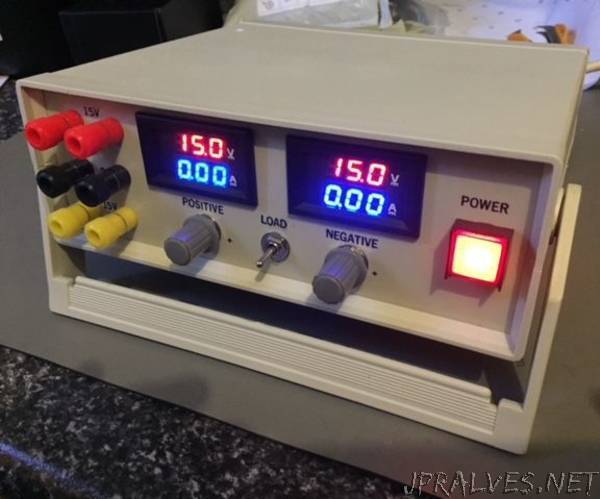
“Introduction:
If you’re a hobbyist that deals with audio, you’ll be familiar with dual rail power supplies. Most low power audio boards such as pre-amps require anywhere from +/- 5V to +/- 15V. Having a dual voltage power supply makes it just that much easier when prototyping designs or just general repairs.
This power supply is easy to put together as it generally uses off the shelf module boards with the exception of the regulator board, which you’ll have to build yourself. However there is a reason behind that which I’ll come to later on.
The regulator board used boasts voltages from +/- 1.25V to 37V (depending on your input voltage). I only need +/- 15V, so an input power supply a couple of volts above that (around 19V) is fine. LM317 and LM337 voltage regulators can also pump out around 1.5A ea (depending on how much voltage they’re dropping), so the input power supply’s current rating also needs to be higher than this. That’s why I chose two laptop power supplies to supply the input voltages. They output 19V and around 3.4A, which is more than enough to supply the regulator board. Not to mention they’re cheap as chips.
I also wanted a linear power supply as they generally have less DC ripple on the output (although not as efficient as a full switch-mode power supply). Using a switch-mode input power supply to drop the 240VAC to 19V is cheap and effective. Their switching is also generally above the audio band so doesn’t affect power supply noise going into your test pieces. The linear regulators will filter out most of the residual DC ripple. So, you pretty much get the best of both worlds.
The meters used can measure voltage and current (0-100V and 0-10A), are dual colour for easy reading.
With a few modifications, you can turn a bunch of parts into a very useful bench top power supply.
Note: One thing this power supply doesn’t have and that is a constant current regulating control. The LM317/337 regulators themselves have some over current protection, however I wouldn’t run them too long this way. That’s why the load switch was placed in this project. So if that’s import, you could use a different regulator board to suit your needs.”
